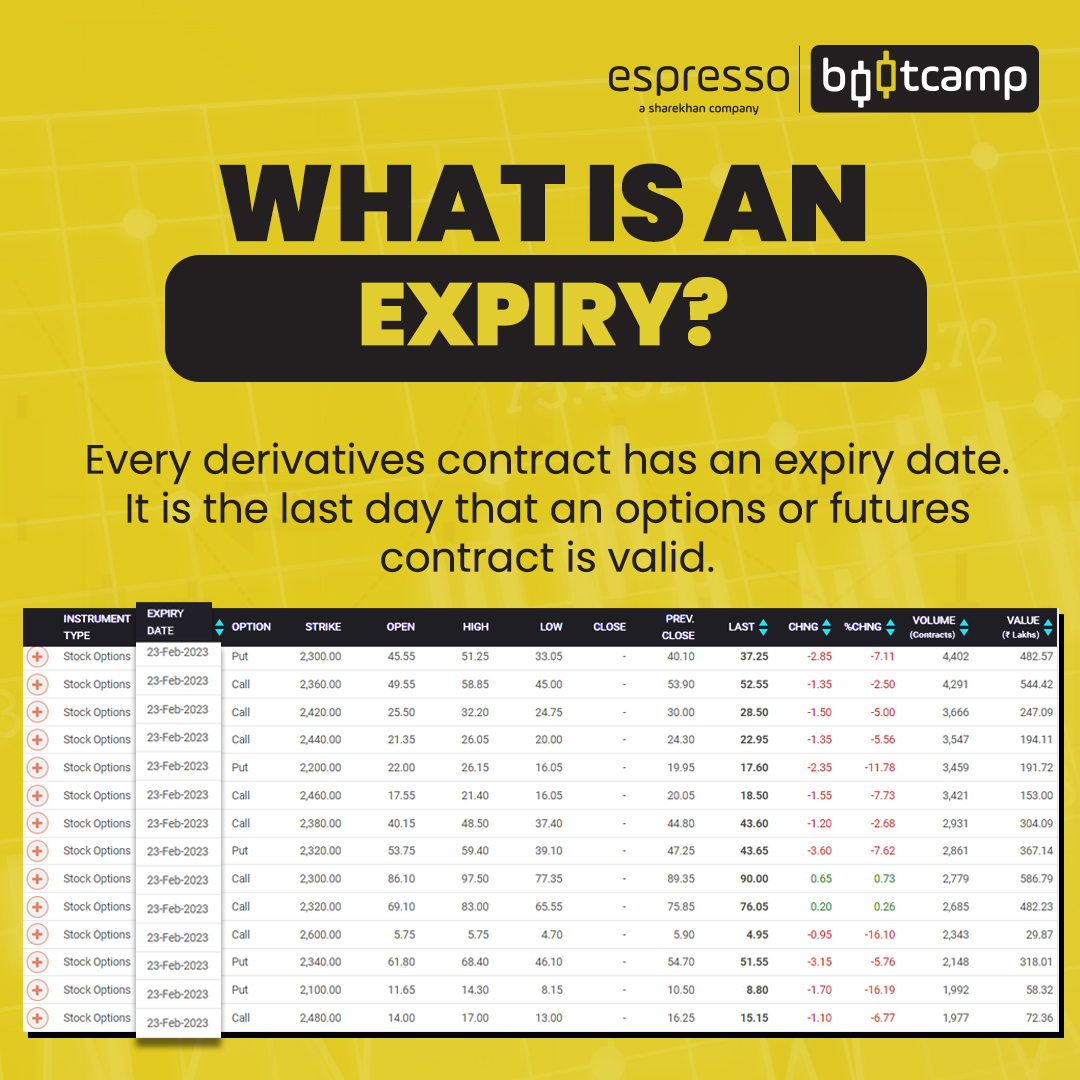06. Option Expiry – Importance of Duration and Rollovers

Unlike stocks and mutual funds, option contracts have a limited life and cannot remain open forever. Their life ends on what is called option expiry or option expiration dates, which the exchanges set in advance. All open transactions are settled on the expiry date. All contracts expire at the usual market closing time on the expiry day or at a time decided by the exchanges.

Options contracts that have been closed (settled) before the expiry date don’t exist, and for such settled contracts, an expiry date has no relevance. On expiration day, the option owner’s rights come to an end. After this day, owners won’t be able to exercise rights on the options contracts they hold because they have become void and no longer carry any value.
Duration and Cost
The most common challenge that traders face is choosing an option with the right expiration date. It’s not enough to know how much the price of the underlying security will move – one should also be able to estimate when it will reach the target price so that the appropriate duration option contract can be chosen.
If one expects the Nifty to go up by 5% in the next 10 days, there is no point in buying a call option that expires two days later. Instead, one should buy the call option that expires in the next month.
Thus, option buyers must consider two factors: cost and duration of the contract. While a longer-duration contract gives more time for the target price to be reached, it comes at a higher cost due to the time value.
Table on Premium by Call Option Expiry Date
| Call option contract | Expiry date | Option premium |
| Nifty Aug 17700 CE | 25/8/22 | 152.65 |
| Nifty Sep 17700 CE | 29/9/22 | 454.05 |
| Nifty Oct 17700 CE | 27/10/22 | 616.95 |
(As on 19/8/22)
From the table above, it’s clear that a longer-duration contract is more expensive because of the premium on the time value. In the case of in-the-money options, as the expiry date approaches, the holder can profit by selling the option or by exercising the option to buy the shares.
In the case of out-of-the-money contracts, the holder can see the premium eventually becoming worthless on the expiration date. The maximum loss for the option holder will be the premium paid.
However, out-of-the-money futures contracts don’t become worthless after the expiry date because the parties are liable to fulfil their end of the deal. In futures, one must close positions on or before the last trading day to avoid the liability of fulfilling the contract. While an American-style option allows the holder to exercise the right at any time between purchase and expiry, such rights for European options can be exercised only at expiry.
Trading Cycle
On the NSE, indices such as the Nifty 50 and Bank Nifty and stock options have a maximum trading cycle of three months – the near month (one), the next month (two), and the far month (three). Derivative contracts expire on the last Thursday of the expiry month. In addition, the Nifty 50 and Bank Nifty have weekly contracts that expire every Thursday.
In both cases, if the last Thursday happens to be a holiday, the contracts will expire on the immediately preceding trading session.
Rollovers
Another feature associated with the expiration date is option rollovers. A rollover is nothing but closing out the nearest expiry contract and entering into a similar position in the next contract period.
If you hold a call option on the Nifty August series and expect the Nifty to go up further, the easiest way to continue holding your position when the series expires is to sell the contract and take a similar position in the next series. Rollovers are usually done on the expiry day. Besides maintaining continuity in options trading, rollovers also provide clues about the prevailing trend. This is done by studying the rollover ratio.
The rollover ratio is calculated by adding the mid and far-month outstanding open interests, dividing it by the sum of the current, mid, and farmonth outstanding open interests, and multiplying by 100. This percentage is compared with the previous ratio.
If the current percentage, i.e., from this series to the next series, is higher than the previous month rollover percentage, it indicates a continuation of the prevailing trend in the next series, at least for the initial period, if not throughout the series. To make more accurate trend predictions, such comparisons should be used with other indicators.
Always remember that option contracts with longer durations are more expensive and push up the break-even cost. While it is prudent to always aim at choosing the right expiration date, you may also have to consider implied volatility and option Greeks, which are discussed separately.
Points to remember:
- Traders should consider the cost and duration (time till expiry) before picking an option.
- Longer duration options tend to be more expensive.
- Rollovers allow a trader to enter into a similar position for the next expiry.
 0
|
0
|
 0
0
 Modules
Modules
 Watch
Watch 
